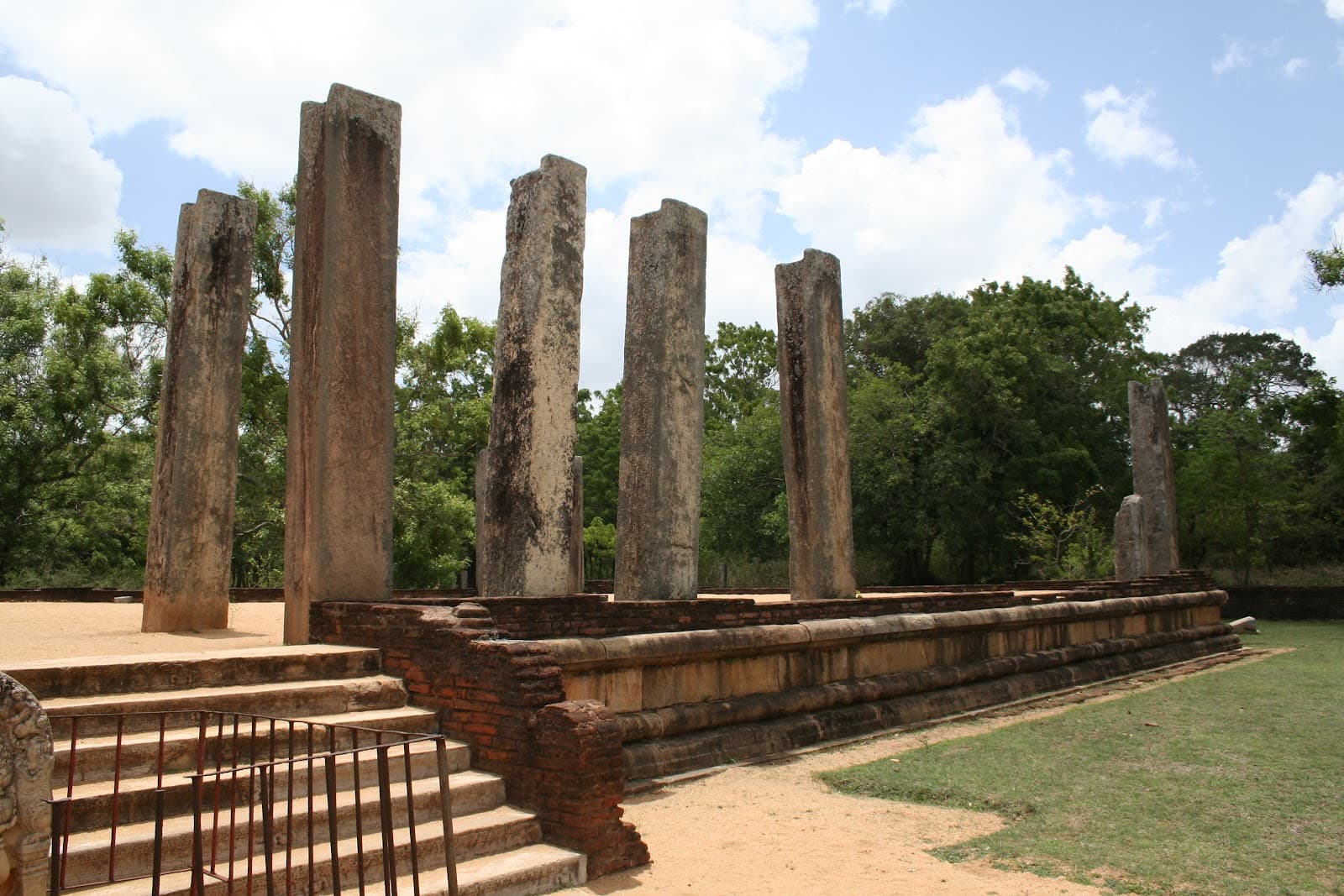
Ratnaprasada Guardstone
Discover ancient artistry at Ratnaprasada, home to the most perfect guardstone of the Anuradhapura era and intricate moonstones.
Highlights
Must-see attractions

Social
From TikTok & Reddit
Best Time
Avoid midday heat

Ratnaprasada Guardstone
Best Time
Avoid midday heat
Highlights
Must-see attractions
Discover ancient artistry at Ratnaprasada, home to the most perfect guardstone of the Anuradhapura era and intricate moonstones.
"The most beautiful and perfect guardstone of the Anuradhapura era which stands today can be seen here."
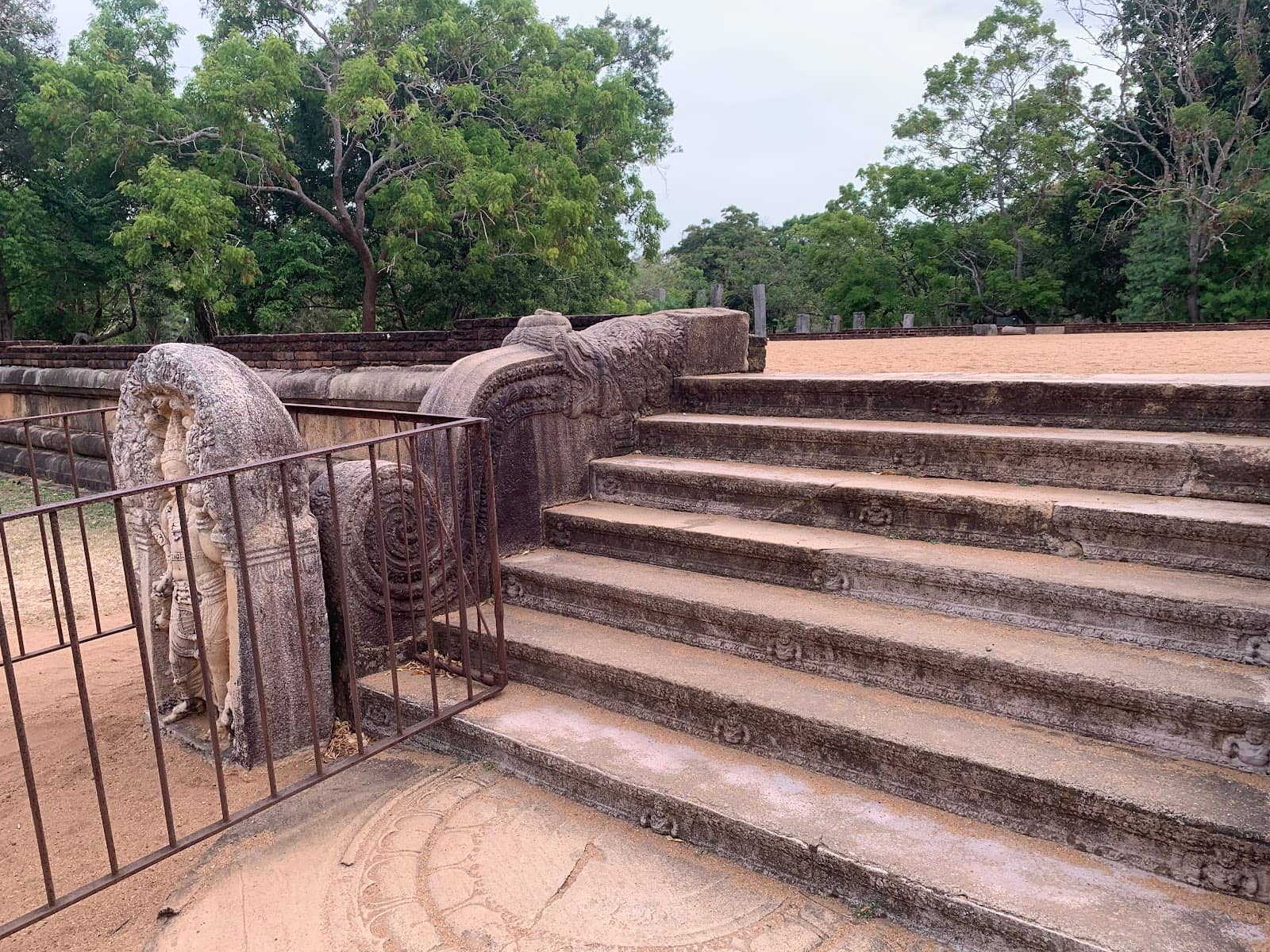
Wear Comfy Shoes
Level terrain but comfy shoes are recommended for exploring the site. :athletic_shoe:
Sun Protection is Key
Bring a hat and sunscreen to shield yourself from the sun. :sunwithface:
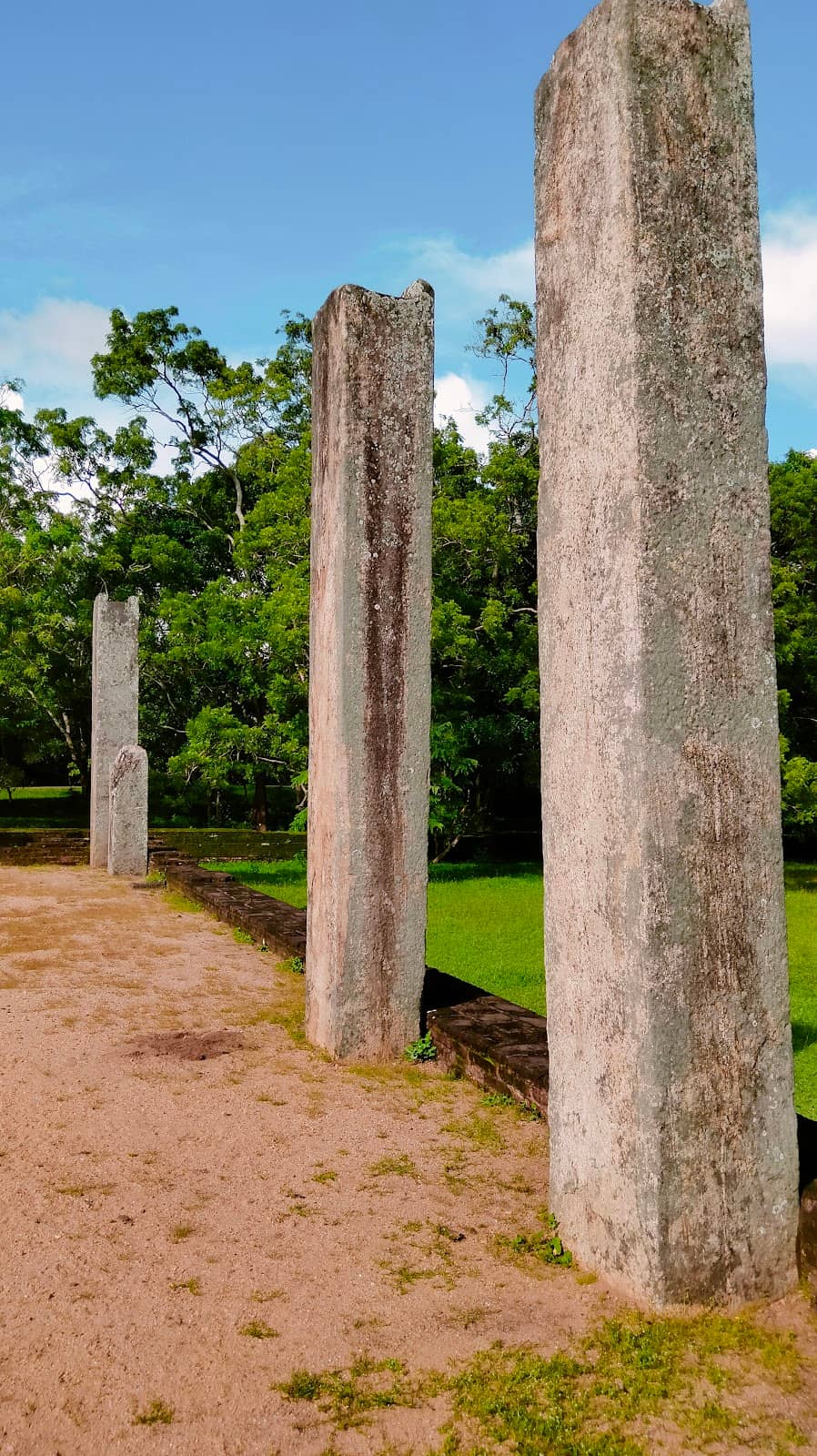
Highlights
Discover the most iconic attractions and experiences

The Perfect Guardstone
Ratnaprasada site
Witness the most beautiful and perfect guardstone of the Anuradhapura era, a testament to ancient Sinhalese artistry.

Intricate Naga Carving
Ratnaprasada guardstone
Marvel at the detailed carving of a Nagaraja, a serpent deity, symbolizing fertility and protection.

Well-Preserved Moonstone
Entrance to Ratnaprasada
Admire the semi-circular moonstone, a decorative element placed at entrances, showcasing ancient Sinhalese architectural details.
Plans like a pro.
Thinks like you
Planning Your Visit
Guardstone Marvels
Historical Significance
Best Times
Insider Tips
from TikTok, Instagram & Reddit
Wear Comfy Shoes
Level terrain but comfy shoes are recommended for exploring the site. :athletic_shoe:
Sun Protection is Key
Bring a hat and sunscreen to shield yourself from the sun. :sunwithface:
Stay Hydrated
Carry water, especially during warmer months. :droplet:
Look for the Makara
Spot the Indian dragon, Makara, on the Korawak Gala, which also served as a railing. :dragon:
Tips
from all over the internet
Wear Comfy Shoes
Level terrain but comfy shoes are recommended for exploring the site. :athletic_shoe:
Sun Protection is Key
Bring a hat and sunscreen to shield yourself from the sun. :sunwithface:
Stay Hydrated
Carry water, especially during warmer months. :droplet:
Look for the Makara
Spot the Indian dragon, Makara, on the Korawak Gala, which also served as a railing. :dragon:
What Travellers Say
Reviews Summary
Visitors are consistently impressed by the exquisite craftsmanship of the guardstones and moonstones at Ratnaprasada, often highlighting them as some of the best examples from the Anuradhapura era. The site's historical significance as a former monastic residence and its well-preserved artifacts are frequently praised. However, some find the site to be a relatively quick visit, best enjoyed as part of a larger exploration of the Abhayagiri complex.
"Rathna Prasadaya was a tower built by King Kanittha Tissa who ruled Ceylon from 167 to 186 AD. Mihindu II and Mihindu IV renovated the building during the 8th and 10th centuries. The bhikkhus of the Tapovana belonging to the Pansakulika sect resided here. Beautiful guard stones of the Abhayagiri Viharaya were found here. The most beautiful and perfect guardstone of the Anuradhapura era which stands today can be seen here."
THISARA NEO
"It was a tower built by King Kanittha Tissa who ruled Ceylon from 167 to 186 AD. Lovely guardstones can be found here. They are unique features of ancient Sinhalese architecture. You see one well preserved guardstone and moonstone here. The latter is semi circular carved stone placed at entrance to venues. Nice to see them. Not much walking from car park, level terrain. Need hat, sunscreen, water and comfy shoes"
s vivekananda
"The muragala at the Rathna Prasadaya (House of Discipline) in the Abhayagiriya Monastery complex is renowned for its intricate carvings. It features a Nāgarāja with a human body and a cobra head, holding a pot of water and a creeper, symbolizing fertility and protection. The cobra's seven hoods further emphasize its sacred significance."
Guru Eye
What People Like
What People Dislike
Frequently Asked Questions
🚇 🗺️ Getting There
Ratnaprasada Guardstone is located within the Abhayagiri Monastery complex in Anuradhapura. It's accessible by car or tuk-tuk from the main Anuradhapura town. Parking is available nearby, and the terrain is generally level from the car park.
Yes, it's a well-known part of the Abhayagiri complex. Follow signs for Abhayagiri Viharaya, and you'll find the Ratnaprasada site within its grounds.
Many visitors opt for bicycles or tuk-tuks to explore the vast Anuradhapura ancient city, including Ratnaprasada. This allows for flexibility and easy access to various sites.
🎫 🎫 Tickets & Entry
Ratnaprasada Guardstone is part of the Anuradhapura Ancient City, which requires an entrance ticket. This ticket grants access to multiple historical sites within the complex.
The Anuradhapura Ancient City, including Ratnaprasada, is generally open from sunrise to sunset. It's advisable to check the official timings upon arrival.
Ticket prices for the Anuradhapura Ancient City can vary. It's best to check the latest information from the Department of Archaeology or local ticket counters for current rates.
🎫 🧭 Onsite Experience
A guardstone, or 'muragala,' is a decorative stone slab placed at the entrance of ancient buildings in Sri Lanka. They often feature intricate carvings, such as serpents or mythical creatures, symbolizing protection and prosperity.
A moonstone is a semi-circular carved stone found at the base of steps leading to important buildings in ancient Sri Lankan architecture. It typically features a central lotus design and is often flanked by decorative motifs.
The guardstones at Ratnaprasada are renowned for their exceptional preservation and intricate carvings, particularly the depiction of a Nagaraja. They are considered among the finest examples of Anuradhapura era artistry.
While it's tempting to touch these ancient artifacts, it's best to admire them without touching to help preserve them for future generations. Follow any posted guidelines.
You can appreciate the guardstones and moonstone at Ratnaprasada in about 15-30 minutes. However, if you're exploring the wider Abhayagiri complex, allocate several hours.
📸 📸 Photography
Focus on capturing the detailed carvings of the guardstone and the moonstone. The morning or late afternoon light can create beautiful shadows and highlight the textures.
Yes, photography is generally allowed at Ratnaprasada Guardstone. However, always be respectful of the site and other visitors. Avoid using flash if it might disturb others or damage artifacts.
A camera with good macro capabilities or a smartphone with a decent camera will work well for capturing the intricate details of the carvings. A wide-angle lens can help capture the context within the Abhayagiri complex.
For Different Travelers
Tailored advice for your travel style
👨👩👧 Families with Kids
🏛️ History Enthusiasts
Deep Dives
In-depth insights and expert knowledge
The Artistry of Guardstones and Moonstones
Complementing the guardstones are the moonstones, semi-circular slabs of stone placed at the base of steps. These stones are usually adorned with intricate floral or animal motifs, with the Makara (a mythical sea creature often depicted as a hybrid of various animals) being a common and significant element. The Makara on the Korawak Gala at Ratnaprasada is particularly noteworthy, showcasing its distinctive head and fish-like body, which also served a functional purpose as a railing for those ascending. These elements collectively demonstrate a deep understanding of both aesthetics and practical design in ancient Sinhalese architecture.
Historical Context and Renovation
During its active period, Ratnaprasada served as a residence for the bhikkhus of the Tapovana, belonging to the Pansakulika sect. This highlights its role as a monastic complex. The discovery of beautiful guardstones here underscores its status as a place of religious and architectural importance. The fact that the 'most beautiful and perfect guardstone of the Anuradhapura era' is found here speaks volumes about its preservation and the quality of its ancient art.

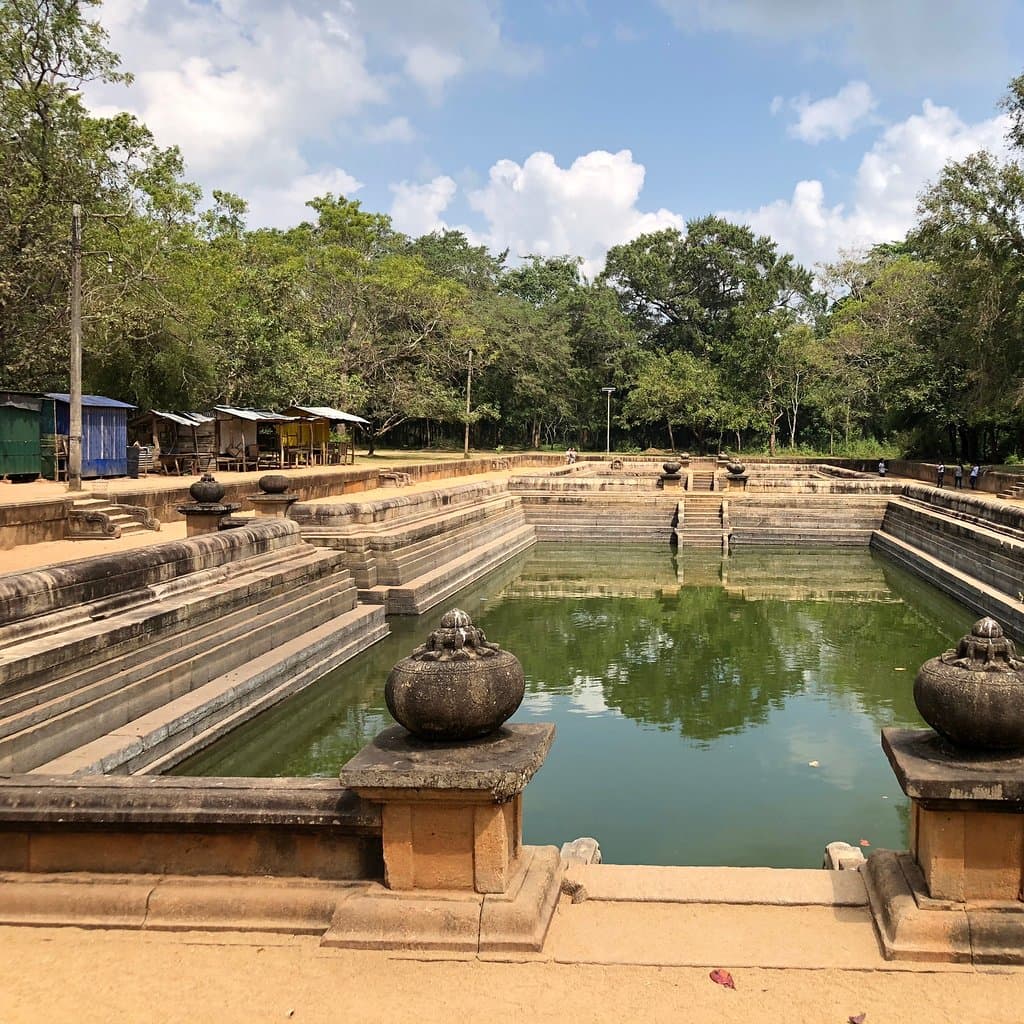
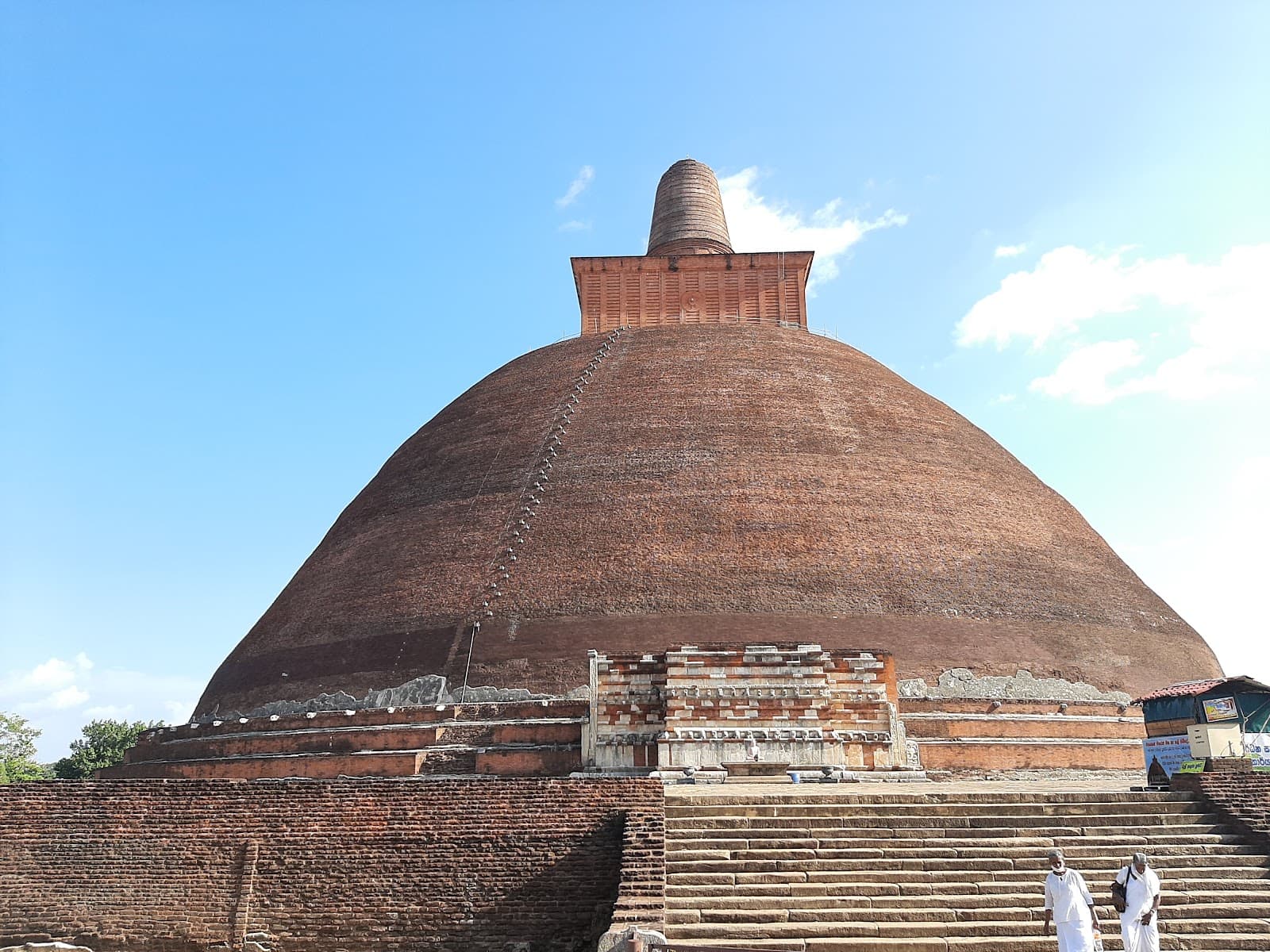
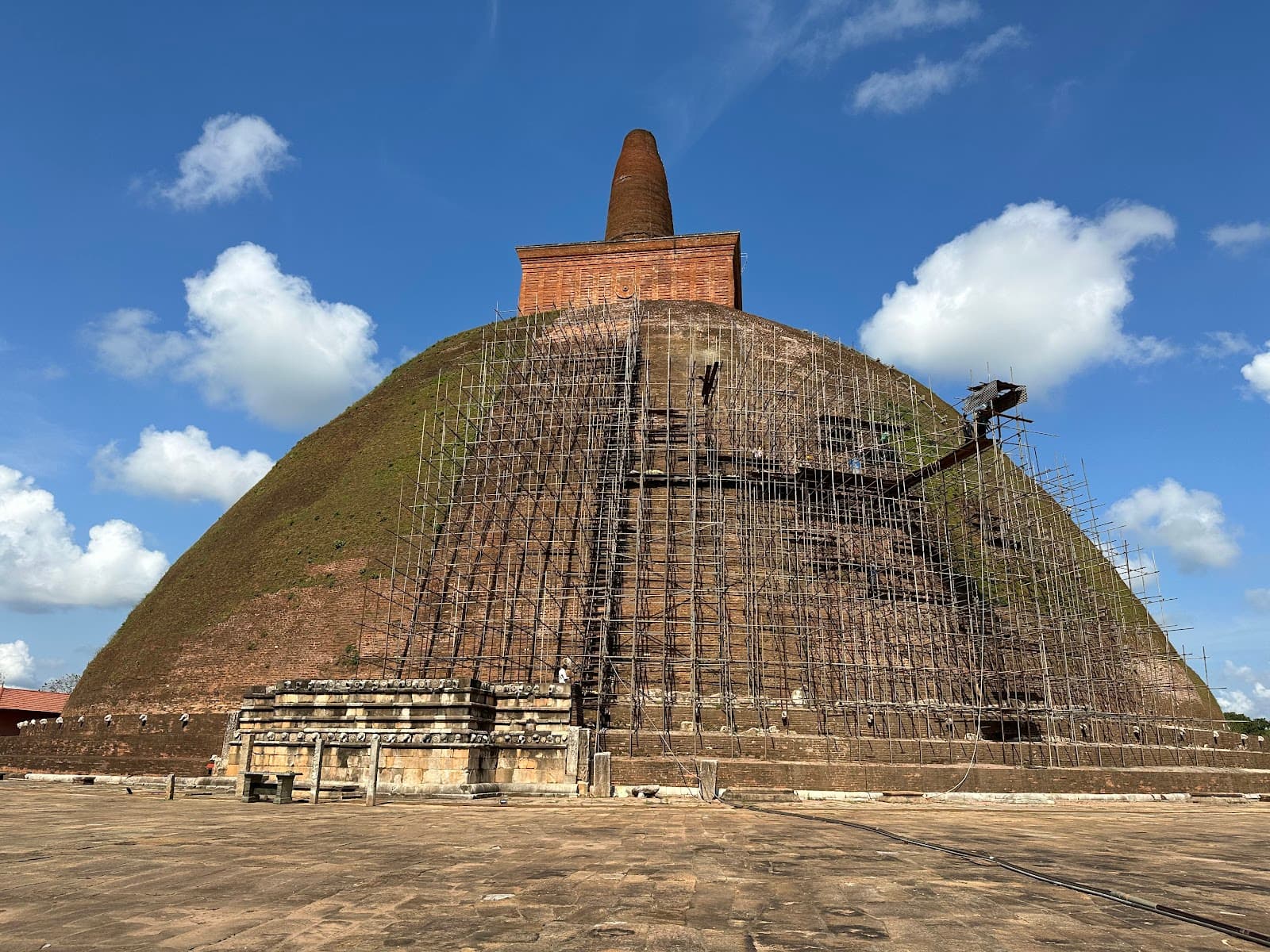
Social
from TikTok, Instagram & Reddit